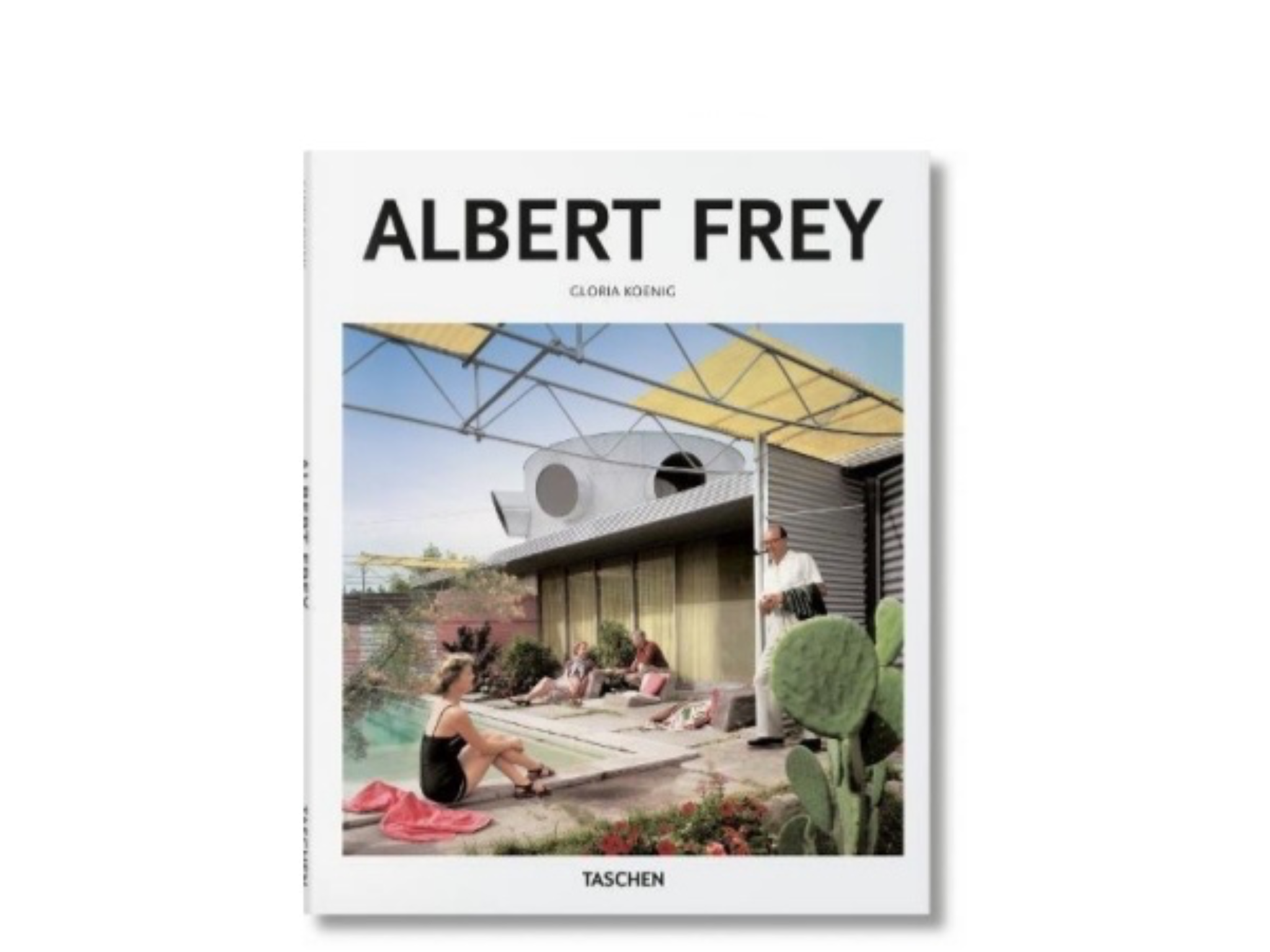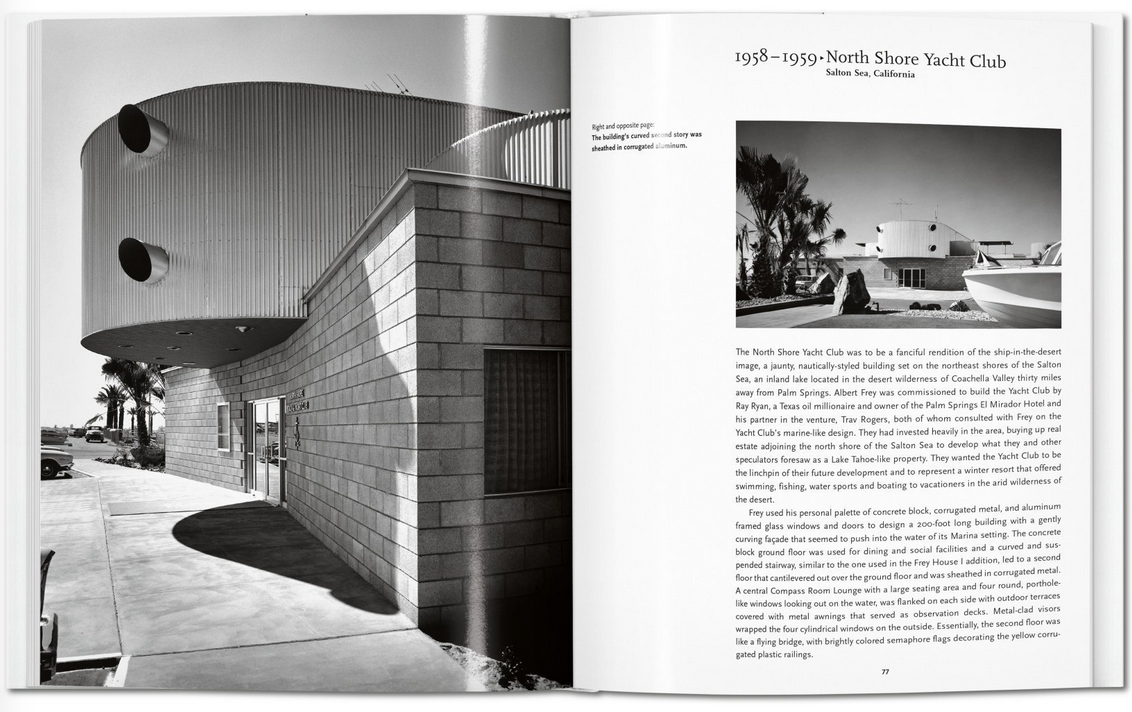

Ingram
Taschen Albert Frey
Pickup available at 2063 Lake Placid Rd #217, Whistler, BC V8E 0B6
Usually ready in 24 hours
Taschen Albert Frey
2063 Lake Placid Rd #217, Whistler, BC V8E 0B6
Pickup available, usually ready in 24 hours
2063 Lake Placid Rd #217
217
Whistler BC V0N 1B2
Canada
Choose options
From his European beginnings, Frey developed a unique architectural brand, one that would redefine midcentury California through sleek, leisurely structures nestled among the arid landscapes of Palm Springs and beyond.
Hardcover, 8.3 x 10.2 in., 1.38 lb, 96 pages
Architect Albert Frey (1903–1998) saw a modernist utopia in the desert. Born in Zurich, he studied in Europe with Le Corbusier before moving to the United States in 1930, convinced it was the land of architectural opportunity. On a visit to Palm Springs, he fell under the desert spell. It was here, amid the arid and empty landscape, that he could truly envisage a perfect modern future.
Like fellow Californian luminary, John Lautner, Frey would spend the rest of his career nurturing the consonance of architecture and nature: studying the fall of sunlight and rain, and merging aluminum, steel, and glass with the boulders and sands of the West Coast wilds. His vision centered in particular on Palm Springs, capitalizing on the city’s postwar population boom to create a bastion of the sleek, leisurely modernism that defines midcentury California.
Like fellow Californian luminary, John Lautner, Frey would spend the rest of his career nurturing the consonance of architecture and nature: studying the fall of sunlight and rain, and merging aluminum, steel, and glass with the boulders and sands of the West Coast wilds. His vision centered in particular on Palm Springs, capitalizing on the city’s postwar population boom to create a bastion of the sleek, leisurely modernism that defines midcentury California.

























